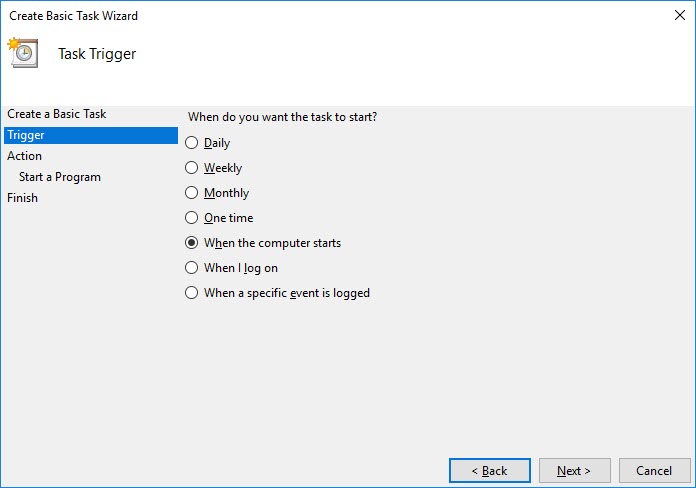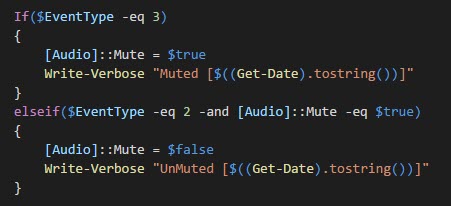INTRODUCTION:
Do you know mobile phones have an inbuilt feature to Auto mute a playing song/music, if by mistake you plug out your earphones from the jack, that prevents your phone to keep playing the music on speakers, which could be quite embarrassing in some surroundings and situations, but unfortunately we don’t have such a feature available on our desktops/laptops 🙁
And I was victim of such an embarrassing situation a few days back, when I was listening to some music on my developer workstation in my office with my headphones on and tried to rest my head on the chair’s backrest in relaxing position, due to tension the cable got unplugged from headphone jack and allowed the music to be played for a while from my laptop speakers and it took me few seconds to realize that I screwed it and everybody in the office is looking at me 😀 . Somehow in hurry I managed to mute my PC. Phew!
It was embarrassing but the good part was I was at least not listening to Taylor Swift 😛 , So I thought why not to look for a solution available to fix this for me? Really I didn’t care much about finding one but was more interested in making one with Powershell! 🙂
THE IDEA:
- Run a background PowerShell script (Hidden preferred) always when your machine is up
- That monitors a device plug – IN/OUT events
- If a Device Plug OFF event is triggered, make sure to MUTE your machine
- Or, in the case of Plug-IN event is generated UNMUTE the machine.
MAKING IT WORK:
- Running the script in background: We can create a basic Task in Windows task scheduler to run a PowerShell script whenever machine whenever computer starts to run a PowerShell script
 This will make sure our script is always running in the background, waiting for a device to be plugged In/out
This will make sure our script is always running in the background, waiting for a device to be plugged In/out - Capture Device Plug-In/Out Events: After some googling and research I found a WMI class Win32_DeviceChangeEvent that represents device change/modification events on a windows machine. Here is the link to MSDN Documentation of the WMI class.It clearly mentions that, Event Type 3 generated under this class is Device Removed and Event Type 2 is Device arrival (plugged in).
 After knowing this I believe, now it’s easier to register a WMI event using Powershell cmdlet
After knowing this I believe, now it’s easier to register a WMI event using Powershell cmdlet
Register-WMIEvent
and wait for any of the above events (Event Type 2 or 3) to occur using cmdlet
Wait-Event

- Handling the events: In the case Event type 3 is triggered, which as per Microsoft’s documentation means – A device plugged off (Removal) event, then we should MUTE our Machine, and when the device is plugged in (Arrival) event is generated we need to UNMUTE the machine.
 .
. - NOTE: We need to access Audio API on our Windows machine, for which we’ve to add some C# code in our script. * Source
SCRIPT:
Wrapping up everything in a PowerShell script looks something like this
You can also fork my Github repo of the script here and feel free to contribute 🙂
HOW TO RUN:
You can run the script on demand like in the below animation or you can create a task in task scheduler to make it run (Hidden) always when your machine starts.

Hope you’ll find the script useful or at least gain some knowledge. Thanks for reading, Cheers! 🙂
My new book : PowerShell Scripting Guide to Python
This PowerShell Scripting guide to Python is designed to make readers familiar with syntax, semantics and core concepts of Python language, in an approach that readers can totally relate with the concepts of PowerShell already in their arsenal, to learn Python fast and effectively, such that it sticks with readers for longer time.
“Use what you know to learn what you don’t. ” also known as Associative learning.
Book follows a comparative method to jump start readers journey in Python, but who is the target audience? and who should read this book –
- Any System Administrator who want to step into Development or Programming roles, and even if you don’t want to be a developer, knowledge of another scripting language will make your skill set more robust.
- Python Developers who want to learn PowerShell scripting and understand its ease of user and importance to manage any platform.
Python is one of the top programming languages and in fast changing IT scenarios to DevOps and Cloudto the future – Data Science, Artificial Intelligence (AI) and Machine Learning Python is a must know.
But this PowerShell Scripting guide to Python would be very helpful for you if you already have some knowledge of PowerShell
NOTE! This is a Leanpub “Agile-published” book. That means the book is currently unfinished and in-progress. As I continue to complete the chapters, we will re-publish the book with the new and updated content. Readers will receive an email once a new version is published!
While the book is in progress, please review it and send any feedback or error corrections at prateek@ridicurious.com
Prateek Singh
Related posts
9 Comments
Leave a ReplyCancel reply
Categories

Author of Books



Awards



Open Sourced Projects

Author at




Blog Roll
Mike F RobbinsDamien Van Robaeys
Stéphane van Gulick
Kevin Marquette
Adam Bertram
Stephanos Constantinou
Francois-Xavier Cat
Ravikanth Chaganti
Roman Levchenko
Blog Stats
- 1,131,935 People Reached



[…] on March 30, 2017 submitted by /u/Prateeksingh1590 [link] [comments] Leave a […]
Great work!!! Thanks.
Thanks LJ 🙂
Neat! 🙂 Great work Prateek
Thank you! 🙂
Reading this today on April 1st – I was thinking just how amusing this might be to run hidden on a co-workers machine but in reverse…….
Thanks for the info.
I find it odd that this isn’t something for this in windows settings already. I have ubuntu dual booted on my machine and noticed that this functionality was on by default.
What do think we should reach out Microsoft and ask them to use this in their Operating system 😉